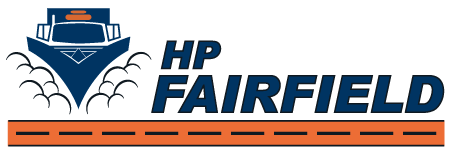Improve Your Website Performance for the New Year

With the new year around the corner, many of our clients are starting to think about ways to improve their websites. A lot of these improvements are focused on appearance. However, website performance matters just as much.
What do we mean by website performance?
By website performance, we mean the speed at which web pages download and display on a web browser. Ideally, your website should load in about two seconds to keep users from clicking away. Every second after that increases the chance of users leaving your site.
Performance goes beyond speed, however, as it can impact your rankings on search engines, visibility on social media, and user experience. This, in turn, can affect metrics like traffic, conversions, and revenue.
Here are seven ways to improve your website performance:
1. Testing
Like all marketing tools, you should test your website’s performance regularly. Testing allows you to see where you need to improve your site’s performance. Tools like Google’s PageSpeed Insights allow you to test your site easily. They also provide actionable items to improve your website’s performance.
2. Less is More
When designing your website, don’t add so many features to your website that they affect its performance. Every element that appears on your website happens somehow. An HTTP request is when a web browser makes a request to a server that fulfills it.
Once the request is received, the server delivers what needs to be displayed, whether it be text, images, or any other element of your website. The fewer HTTP requests made, means fewer downloads and faster display times. Ideally, you should have 30 requests or fewer.
Along with performance improvements, including fewer features can make your website more accessible. Accessibility here is defined as the ability for all people to navigate your website easily, even if they have a disability.
3. Smaller is Better
Your images and other design elements make up your website. While you should still include these features, consider minimizing the file sizes used. First, begin by removing unnecessary comments and spacing in the source code so that web browsers can read them faster.
Second, consider file compression. The larger the file, the longer it takes to load. You may have the perfect photo to use on your website, but the file size may be too large. Fortunately, there are free online tools that can compress files, like images, to a size suitable for use on your website.
4. Use Website-Friendly Fonts
Like other design elements, fonts, especially custom fonts, can add weight to your website and affect its performance. How so? Let’s say you’re using custom fonts and a visitor to your website doesn’t have that font installed on their operating system. Their computer needs to download the web font files along with the rest of the website.
To avoid this, consider using fonts accessible to all browsers. For example, Google Fonts is a collection of fonts hosted by Google accessible to all browsers. That way, someone using the latest version of a web browser can receive the latest version of that font optimized for their browser. This increases your website’s speed since the font doesn’t need to be downloaded.
Along with website loading speed, the fonts you choose affect how accessible your website is to people with certain disabilities. These people may use devices like screen readers that work best with certain fonts. Even if they do not, larger, sans serif fonts are easier to read for people who are visually impaired.
5. Host Videos Off-Site
Video is an increasingly popular tool among marketers. They make great visual additions to a website. However, they can add unnecessary weight to your website. If you use your server’s bandwidth to display the video, you increase your webpage size and slow it down by doing so.
Fortunately, there are a variety of options for alternative locations to host your video, like YouTube. Instead of storing your video on your own server, you use the host’s server instead. However, this doesn’t mean your users will have to leave your website to view your videos.
To display the video on your website, embed it into the page of your choosing by using the code provided by the platform. By doing this, you can significantly reduce the weight of your page. In turn, this speeds up your site while still allowing users to view your videos on it.
6. Reduce Redirects
Let’s say you’ve changed the URL of your website to reflect your new business name and want users to still be able to access it. A redirect sends both people and search engines to a different URL from the one originally requested.
Like any other element of your website, redirects require HTTP requests. Like too many HTTPS requests can slow down your page, too many redirects can as well. Ideally, you should have just one redirect.
7. Be Responsive
More people use mobile devices to access websites than ever before. How mobile-friendly your website is affects its performance. That said, use a mobile responsive design to optimize your website for all devices. By mobile-responsive, we mean that the website adjusts to the screen size on which it’s being viewed.
Want to Improve Your Website’s Performance?
No matter how long your website has been live, improving its performance is an ongoing task. This may seem like another thing on your to-do list, but it’s an important part of your overall website maintenance. If you want to improve your website’s performance, contact Links Web Design for a free consultation today!
Links Web Design is a Web Design Agency in Bangor, ME, and Fruitland Park, FL.









